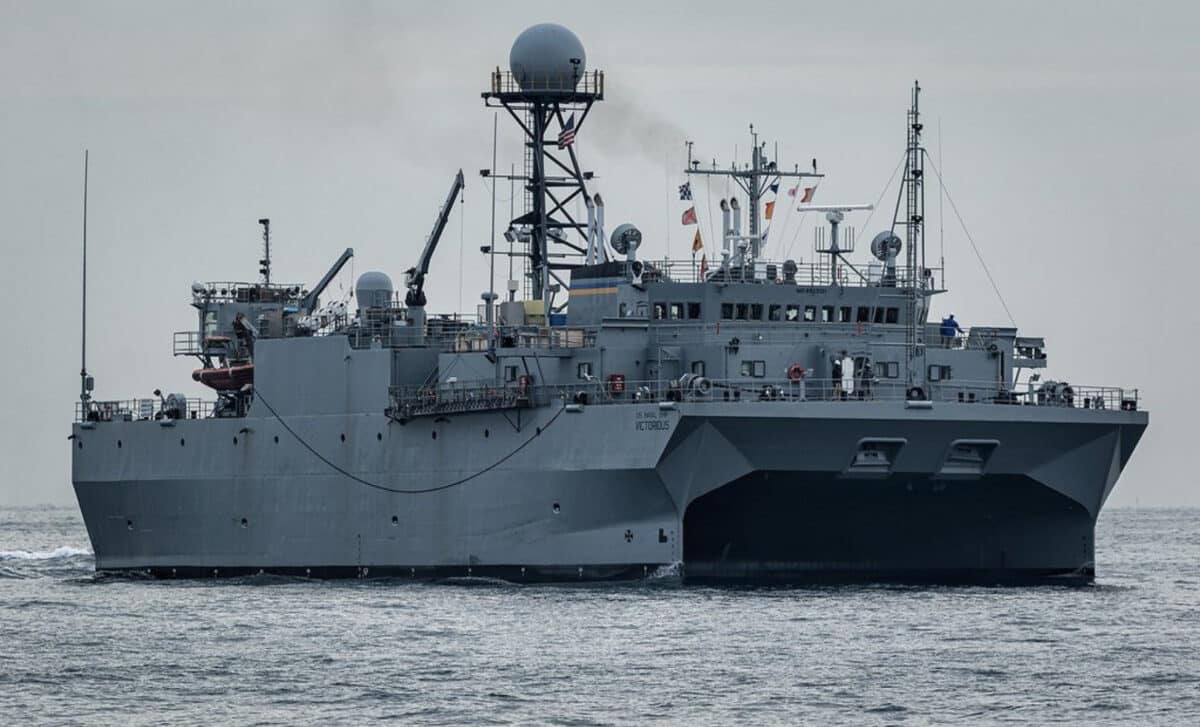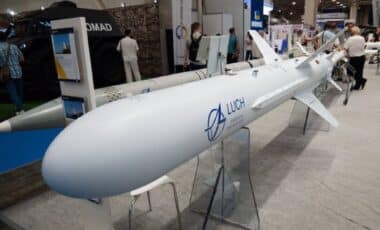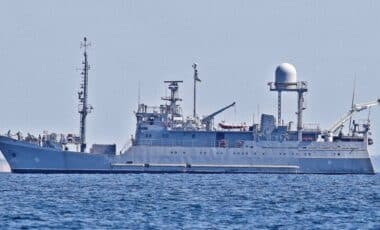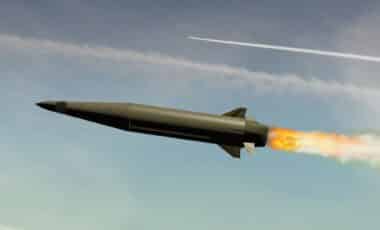A U.S. Navy ocean surveillance ship, the USNS Victorious, has been operating in the South China Sea since at least May 22, 2025, as part of routine operations, according to the U.S. Seventh Fleet. The ship, equipped with specialized technology for collecting underwater data, is gathering critical information in one of the world’s most contentious maritime areas.
This region, which sees overlapping territorial claims from countries like China, the Philippines, and Vietnam, has long been a flashpoint for military tensions and confrontations. The Victorious is specifically tasked with conducting anti-submarine warfare missions, which adds to the already heightened strategic importance of the South China Sea. The vessel’s presence in the area underscores the ongoing competition for influence between the U.S. and China, reports Newsweek.
Trump’s Nuclear Deal Doubts Could Spark Military Conflict with Iran
Tensions Over Territorial Claims
The South China Sea is a crucial waterway for global trade and military navigation, with China asserting control over significant portions of the sea, including the Spratly Islands and Scarborough Shoal. These areas are also claimed by other countries, such as the Philippines and Vietnam, leading to frequent clashes between rival claimants.
The Victorious is operating in this contested space to support U.S. security interests, with the goal of monitoring and detecting undersea threats. According to the U.S. Seventh Fleet, this mission is part of maintaining security and ensuring freedom of navigation in the region.
This maritime dispute has escalated in recent years, with China continuing to build military infrastructure, including airstrips and radar systems, on various islands. These developments have drawn criticism from neighboring nations, particularly the Philippines, which has been involved in a long-standing standoff with China over Scarborough Shoal. The U.S. Navy, through surveillance ships like the Victorious, aims to provide a counterbalance to China’s growing presence.
Advanced Surveillance Technology
The USNS Victorious is equipped with the Surveillance Towed-Array Sensor System (SURTASS), a state-of-the-art tool for detecting undersea acoustic signals. This system allows the ship to track submarines and other submerged threats, playing a pivotal role in anti-submarine warfare. As a specialized vessel, the Victorious supports broader U.S. military operations in the Western Pacific by gathering critical intelligence on potential underwater adversaries.
The vessel’s activities are part of the U.S. Navy’s broader strategy to maintain a technological edge over rivals like China. The Victorious was last tracked in the central South China Sea in early June, moving toward strategic areas near the disputed Spratly Islands. The deployment of this ship is also aligned with U.S. efforts to keep the sea lanes open for all nations, despite ongoing tensions with China over the region’s sovereignty.
Growing Chinese Military Presence
China’s military footprint in the South China Sea has grown significantly in recent years, with the country now stationing nuclear-powered submarines at bases facing the contested waters. These developments include the construction of underground facilities designed to shield the submarines from potential threats. The increased military presence in the region aligns with China’s broader strategic goal of asserting dominance over the South China Sea and ensuring control over its vast natural resources.
In response to the U.S. presence, Chinese officials have repeatedly stated that there are no issues with freedom of navigation in the region. However, they have also accused the U.S. of exacerbating tensions. According to a Chinese Foreign Ministry spokesperson, the U.S. is a primary factor in destabilizing the peace and stability of the South China Sea. This diplomatic tension highlights the broader geopolitical struggle between the U.S. and China, with both nations vying for influence in the Asia-Pacific region.








